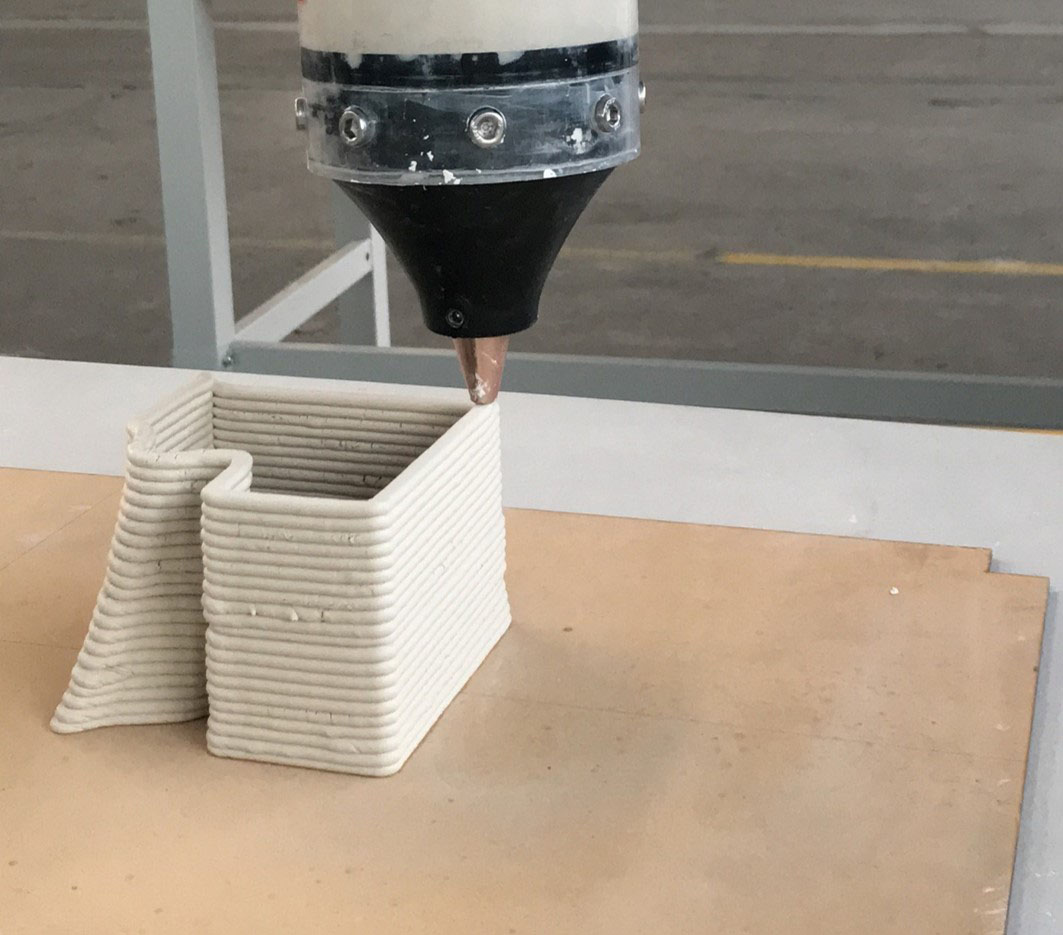Remote Robotic Additive Manufacturing
Part of the exhibition Purpose Built: Architecture for a Better Tomorrow,
State Library of Queensland, Brisbane, 2 September–14 April 2024
Lead researchers: Dr Maryam Shafiei, Dr Frederico Fialho Teixeira
This project investigated remote robotic 3D printing of clay-based bio-materials to produce blocks with improved structural and environmental performance.
Traditionally, the architecture, engineering and construction industries have relied heavily on carbon-intensive materials and wasteful production methods, contributing significantly to global CO₂ emissions. This project used bio-composite materials, specifically integrating algae fibres with clay, to produce durable, eco-friendly building components through robotic additive manufacturing. By focusing on locally sourced materials, the project aligned with both environmental sustainability goals and the advancement of automation in construction.
Using a UR10 collaborative robot, varying percentages of algae were combined with clay to explore the relationship between the percentage of algae in the mixture and the resulting structural integrity of the printed blocks. This material exploration was paired with an examination of diverse geometries inspired by biomimicry patterns, testing the proposition that the versatility of robotic 3D printing enhances material and geometric properties and optimises the use of bio-composites in construction.



